Treating PTSD And Addiction in Pennsylvania
PTSD and addiction are closely connected, as people who have PTSD are three times more likely to abuse substances. When we consider that around 360,000 Pennsylvania residents have to contend with PTSD on a daily basis, it is no wonder why many of them succumb to addiction (every day 10 Pennsylvanians die due to substance use disorder). While you can go to a Pennsylvania rehab center to get treatment for both PTSD and addiction, many people choose to treat one or the other. However, the best way to be treating PTSD and addiction in Pennsylvania is to undergo a dual-diagnosis treatment program, where you will get treatment for both maladies at the same time. To get the most out of your treatment, however, you will want to understand a bit more about both PTSD and addiction. Don’t worry, though, as we will provide you with all the information you need!
Jump to Section
PTSD – Causes, symptoms, and co-occurring conditions
PTSD (Post Traumatic Stress Disorder) is something that can happen to anyone who witnesses or experiences a particularly traumatic event. Some people develop PTSD due to a certain set of circumstances or by going through a series of traumatic events. Basically, whenever you find yourself in a situation that is either life-threatening, physically harmful or can affect your social/spiritual/mental/physical well-being, you have a chance of developing PTSD.
Most people believe that PTSD is “something that veterans get”. While veterans are one of the likeliest individuals to develop PTSD due to “shell shock”, they are far from being the only ones that can get PTSD. In fact, when you consider how many people enroll in drug rehab Pennsylvania programs to get help for their PTSD and addiction, veterans might even be the minority. In fact, almost 4% of all U.S. citizens suffer from PTSD every single year. This is even worse with adolescents, who have an 8% chance of being diagnosed with this disorder.
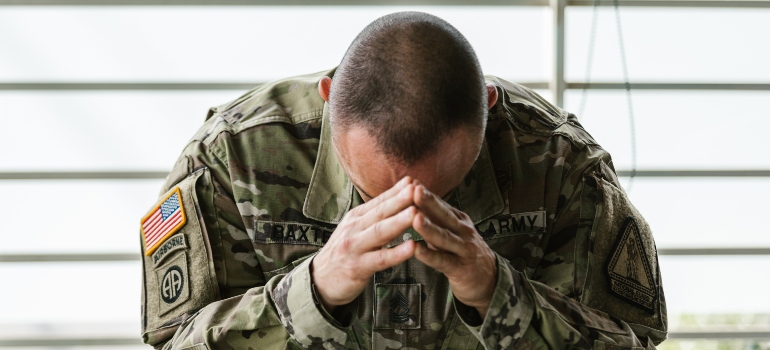
There are three ethnic groups that have a higher chance of developing PTSD than others – African Americans, Native Americans, and U.S. Latinos. Furthermore, women are usually twice as likely to develop PTSD than men.
What causes PTSD?
As mentioned previously, PTSD can be brought about by any stressful, distressing, and frightening event, as well as being exposed to a prolonged traumatic experience. Some of the events that may lead to PTSD include:
- War/Conflict
- Death of someone close
- Physical assault
- Sexual assault
- All sorts of abuse (domestic, childhood, etc.)
- Serious health problems
- Miscarriage
- Torture
- Exposure to work-related traumatic experiences
Furthermore, people who already have mental health issues, such as anxiety or depression, are much more likely to develop PTSD, as do people who do not receive emotional support from their social circle. Some research also indicates that genetics can also contribute to PTSD. This is why it is usually the best idea to visit one of the dual diagnosis treatment centers Pennsylvania has on offer, as the professional medical staff there can help you identify the cause. On your own, you might not even realize why you are behaving the way you are.
That being said, it is still not completely known what exactly causes PTSD. So far, the researchers have suggested a number of possible reasons, such as high adrenaline levels, survival mechanisms, and changes in the brain.
High adrenaline levels
During the course of PTSD research, various studies have documented that people with PTSD experience abnormal stress hormone levels. Now, it is perfectly natural that your body produces more stress hormones when it is in danger. This is known as the “Fight or Flight” response. It is the way in which our body manages pain and stress during a traumatic encounter. The difference between a normal response and PTSD is that people who have PTSD experience high hormone production even when there’s no danger whatsoever.

The problem is that once your body starts producing more hormones on a regular basis, it can be rather difficult to make it stop doing so. Most of the time, you will need to enroll in a partial hospitalization program rehab Pennsylvania, at the very least. For most people, however, going into residential treatment in a dual-diagnosis rehab center is the best idea.
Survival mechanisms
Some researchers believe that some people develop PTSD as a way to survive subsequent traumatic experiences. Basically, our body tries to prepare us for what comes ahead by exhibiting symptoms even if there’s no imminent danger. This allows you to think more about the traumatic events and be better prepared if they happen again. Furthermore, most people with PTSD are constantly on the edge, always ready to react quickly in case of another crisis.
So far, all of this sounds rather helpful, right? The problem, however, is that this constant state of tension is extremely unhealthy as it does not allow you to properly process what has happened to you. The more time it takes you to process and move on, the more your health will deteriorate. This is why it is extremely important to seek PTSD treatment. Furthermore, most people who experience PTSD symptoms will try to find another way to deal with them. As you might imagine, this makes them quite open to addiction issues. In addition, having to pay for cocaine addiction rehab alongside your PTSD rehab, for example, may bring about other mental health issues that are connected to your financial situation.
Changes in the brain
When a person develops PTSD for the first time, their brain changes somewhat. Researchers have found that the hippocampus (the part that is responsible for emotion/memory processing) is slightly smaller in PTSD patients. The current hypothesis is that this change is related to feelings of fear and anxiety, as well as flashbacks and other memory issues.
What this means is that people who develop PTSD are prevented from properly processing their flashbacks and nightmares due to a seemingly insignificant brain change. This is also why their anxiety is not being reduced over time like normal. Luckily, this is something that can be treated, as treating PTSD and addiction in Pennsylvania involves techniques to help you process your memories. By undergoing treatment, your nightmares and flashbacks will slowly subside and then disappear altogether. The time that it takes for this to happen is different for each individual, however. Some people can manage to get rid of their PTSD in a short timeframe while others may require years of treatment.
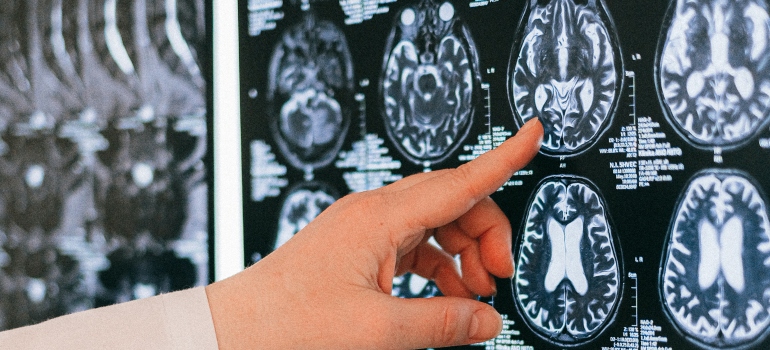
Symptoms of PTSD
The reason why many people do not consider PTSD treatment is that they are unaware that they actually have the disorder. This happens due to the fact that PTSD symptoms may occur as early as one month after a traumatic event, or as late as years after the event. In most cases, the person suffering from this disorder will not know what “hit them”.
There are four types of PTSD symptoms – Avoidance, negative changes in thinking/mood, intrusive memories, and changes in emotional/physical reactions. Of course, since every person is wholly unique, these symptoms can vary from one person to another.
Avoidance
These symptoms are usually not as destructive as other symptoms. A person who is suffering from PTSD avoidance symptoms will generally try to avoid even thinking about the traumatic event. They may also avoid talking about it, or avoid anything that has to do with the traumatic event (places, people, activities, etc.).
Negative changes in thinking/mood
These symptoms have a much greater impact than avoidance symptoms. People who experience negative changes in mood and thinking usually experience one or more of the following:
- Difficulty with maintaining close relationships
- Feeling emotionally numb
- Feeling hopeless about the future
- Having negative thoughts about others or yourself
- Memory issues
- Having feelings of detachment from one’s friends and family
- Lack of interest in previously-enjoyed activities
- Having difficulties expressing positive emotions

As you can see, many of these symptoms are easy to overlook on their own. If you start experiencing any of these symptoms after a traumatic event, it is usually best to consult with a specialized medical professional. If you have already started self-medicating with benzodiazepines, for example, you may also want to talk to medical staff from one of the benzodiazepine rehab centers. Treating PTSD and addiction at the same time is possible, and the sooner you start, the better.
Intrusive memories
While not as impactful as the previous symptoms, intrusive memories can considerably interfere with normal life. The most common symptoms of this type include:
- Dreams and/or nightmares about the traumatic event
- Experiencing physical reactions or severe emotional distress whenever you face something that reminds you of the traumatic event
- Flashbacks
- Experiencing recurrent and unwanted distressing memories connected to the traumatic event
When faced with these symptoms, most people simply want to become “numb” to them. This is why many PTSD victims try to consume a substance such as alcohol whenever they experience such memories. Unfortunately, this can easily lead to alcohol addiction and the need to spend some time in one of the alcohol rehab centers Pennsylvania has on offer. Another problem is that these people try to treat the symptoms of their addiction and not the symptoms that brought the addiction in the first place. This is why treating PTSD and addiction in Pennsylvania all but requires dual-diagnosis treatment.
Changes in emotional/physical reactions
Also known as “arousal symptoms”, the symptoms connected to the changes in emotional and physical reactions include:
- Having trouble sleeping
- Being overwhelmed by shame or guilt
- Always being on the “edge”
- Having trouble concentrating
- Exhibiting self-destructive behavior
- Feeling irritable or angry
- Being frightened or startled more easily

Similar to mood/thinking symptoms, these symptoms can oftentimes be ignored by many PTSD victims. They might think that this is just the way it is now and that there is nothing they can do about it.
If you start noticing any of the above-mentioned symptoms, from either type, for more than a month, visit your doctor immediately. More often than not, PTSD symptoms get worse over time without professional medical treatment.
Furthermore, there is always a chance that you have developed PTSD-related conditions, or that one of those conditions made you more susceptible to developing PTSD in the first place. Therefore, knowing about these conditions may allow you to seek treatment before they have a chance to cause any more harm.
Conditions related to PTSD
While there may be numerous conditions that may be related to PTSD in some way, three of them are far more common than others. Here are the most common PTSD-related conditions:
- Adjustment disorder
- Reactive attachment disorder
- Disinhibited social engagement disorder
Adjustment disorder
A person can develop adjustment disorder in much the same way as PTSD – through responses to stressful life events. While it is quite normal to respond more severely when experiencing a traumatic event, people with adjustment disorder usually respond extremely. Some of the symptoms of adjustment disorder are quite similar to PTSD symptoms and include:
- Withdrawing from other people
- Feeling sad or hopeless
- Acting defiantly
- Exhibiting overly impulsive behavior
- Experiencing tremors, headaches, and palpitations

On their own, these symptoms can present a significant issue to normal functioning. Most of the time, these symptoms start to occur within three months of a traumatic event, and last no longer than six months after that. Fortunately, these symptoms are somewhat easily treatable with psychotherapy.
Reactive attachment disorder
This disorder usually occurs in children who were the victim of either deprivation, severe social neglect, or both. A child will usually develop reactive attachment disorder if they lack stimulation, affection, and other basic emotional needs. The disorder can also be brought about by frequently changing caregivers, as the children will not be able to form stable attachments.
Luckily, this disorder is quite rare, as children can be unbelievably resilient. On the other side, reactive attachment disorder can easily lead to PTSD if not treated properly. Proper treatment involves a professional therapist who will help strengthen the relationship between the children and their caregivers.
Disinhibited social engagement disorder
Disinhibited social engagement disorder is quite similar to reactive attachment disorder, as it exhibits the same symptoms. However, it can only happen before the age of two. Furthermore, children who develop disinhibited social engagement disorder behave much differently than those with reactive attachment disorder. In most cases, the children will be quite willing to spend their time with unfamiliar adults, and they will show little to no hesitation while doing so.
In addition, these children may also experience language and cognitive delays and are in much greater danger of developing PTSD.
Addiction – Causes, symptoms, and co-occurring factors
Addiction has long been considered a character flaw. However, AMA (American Medical Association) classified addiction to alcohol as a disease in 1956 and included addiction to other substances as a disease in 1987. These days, almost everybody understands that addiction is something that affects a large number of people on a daily basis and that it has nothing to do with the person’s character. In other words, everyone has the potential to succumb to addiction, given certain circumstances.
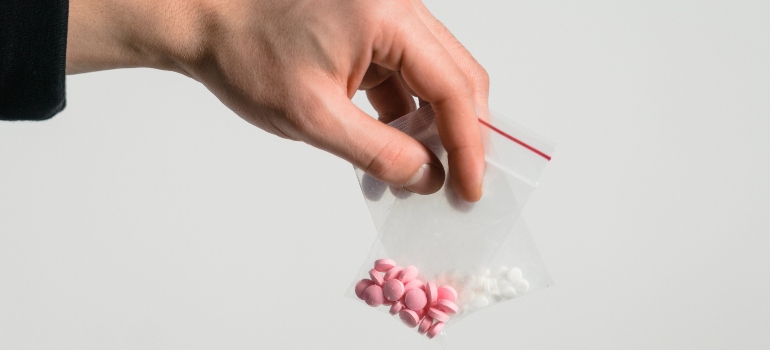
To understand addiction, we need to take a look at what may cause it, its symptoms, and any co-occurring factors that may influence it.
What causes addiction?
There is no one singular thing that causes addiction. The fact of the matter is that there are as many causes as there are people. However, many people succumb to addiction due to one of the following:
- Life events and traumatic experiences
- Childhood experiences
- Substance availability
- Peer pressure
Identifying the underlying cause is extremely important when choosing the best course of treatment. This is why almost every heroin rehab Pennsylvania program, for example, spends a lot of time helping the patient identify exactly why they have started abusing a substance. By knowing the underlying cause, it is possible to create custom-tailored treatment programs that can help in treating PTSD and addiction in Pennsylvania and bring lasting recovery.
With that in mind, let’s take a look at these causes in a bit more detail.
Life events and traumatic experiences
Difficult life events can be really hard to deal with for most people. When you experience a death of a loved one, for example, you might feel like your world has just ended. In these situations, anything that can help you cope with the situation might seem like an excellent idea. While most people simply struggle for a while before returning to their normal life, some people choose to try and end their misery by abusing a certain substance such as alcohol and opiates. After abusing the substances for a while, they develop an addiction to them.
We’ve already mentioned how living through traumatic experiences will have you at a greater chance of developing PTSD. To make matters worse, many people will develop an addiction at roughly the same time. In fact, almost 80% of people who have developed PTSD also have an addiction problem. The two “fuel” each other and create a very dangerous combination.
Childhood experiences
Substance use disorder can also be brought about by negative childhood experiences. If a child has been abused in any way (verbally, physically, sexually, etc.), or if it has been neglected by their parents, they may develop a substance use disorder later in their life. This can also happen if a child witnesses disturbing events such as parental separation/divorce, or if they have witnessed acts of extreme violence. This is not to say that every child will abuse substances if exposed in this manner, but many will do so.

Substance availability
If a person is surrounded by “freely available” substances, they have a much greater chance to develop an addiction. For example, if a parent introduces their children to drugs, chances are that the child will, at some point, develop a substance use disorder. More commonly, though, it is the availability of drugs at school that creates most addictions. When drugs are all around you, it is quite difficult to at least not try them and see what they are all about.
The most common drug that can be found in a school setting is marijuana. Marijuana may not create physical addiction but is very dangerous in its own right. In fact, many kids need to attend a marijuana rehab Pennsylvania program after using the drug for several years. The problem is that marijuana is practically everywhere and that it is really easy to start abusing it. Most of the time, however, substance abuse starts at home. If someone in the family is abusing drugs or alcohol, chances are that children who are being raised in that family will follow suit at some point.
Peer pressure
Due to how prevalent drugs are in today’s society, it can be very difficult to be the only one that is not using them. Peer pressure is extremely powerful, and it is one of the main causes of addiction. What usually happens is that someone who is not willing to use any drugs, alcohol, or other substances, is ridiculed in some manner by the members of their social circle. Of course, the person who is not using any substances is right, and the others are wrong, but that may not matter much to the group as a whole.
You see, people who are abusing substances usually know that they are doing something wrong. By “forcing” others to abuse substances, they are creating a bubble of approval and are able to feel better about their substance use. Not everyone is like that, of course, but many are. That is why it is usually best to withdraw from any social groups that use substances on a regular basis, or treating PTSD and addiction in Pennsylvania will become much more difficult.
Once you do develop an addiction due to any cause, you will have to deal with numerous symptoms that may make your life much more difficult.
Symptoms of addiction
Being addicted to any substance comes with a large range of symptoms. Most symptoms will depend on the substance you are addicted to, but some are more general in nature. Here are some of the most common general symptoms of addiction:
- Experiencing withdrawal symptoms when stopping to use the substance
- Needing the substance to block out other thoughts
- Failing to meet school, work, or other responsibilities
- Avoiding some social and recreational activities in lieu of substance use
- Having a feeling that you have to use the substance on a daily basis
- Needing to take more of the substance to achieve the same effect as before
- Obsession with having a certain supply of the substance available to you
- Spending money on the substance when you can’t really afford it
- Continuing with substance use even though you are fully aware it is causing you problems
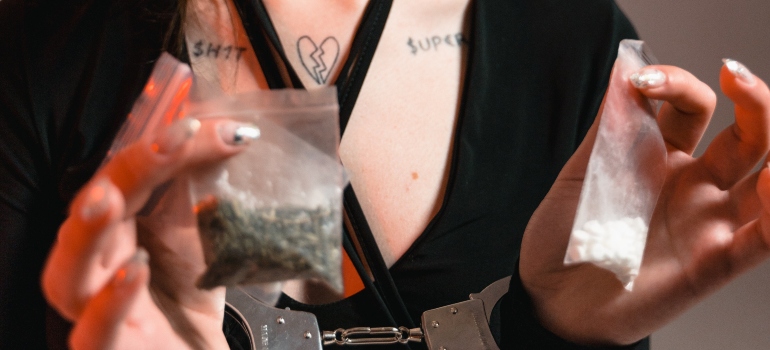
Other symptoms may include driving under the influence, spending a lot of time on substance-related activities, failing to stop using the substance, and many others. However, many of these symptoms can be brought about by more mundane means, such as going through puberty. In other words, it can be quite difficult to figure out whether someone is a normal teenager or if they are struggling with addiction. If you are trying to do so, make note of the following:
- Changes in behavior
- Physical health issues
- Issues at school or work
- Financial issues
- Lack of self-care
There’s one more thing that may complicate things – Co-occurring disorders. Addiction rarely acts alone, after all, and chances are that an addicted person is suffering from one or more mental health issues.
Co-occurring factors
Almost every study clearly shows that people who are struggling with a mental illness are much more likely to develop an addiction. Aside from PTSD, a person can be “driven” to addiction by suffering from any of the following mental health issues:
- Depression
- Anxiety
- Eating disorders
- Bipolar disorders
- OCD (Obsessive Compulsive Disorder)
- ADHD (Attention Deficit/Hyperactivity Disorder)
- Schizophrenia
- Personality disorders such as BPD (Borderline Personality Disorder)
Figuring out whether someone has a co-occurring factor is critical in addiction treatment. This is due to the fact that it is practically impossible to fully recover from an addiction and mental health issues by not dealing with all of them at the same time. In other words, a dual diagnosis is required for successful treatment.

Treating PTSD and Addiction in Pennsylvania might not be the easiest thing in the world, but it is definitely possible, highly likely even. There are numerous options at your disposal, such as specialized Pennsylvania opioid treatment programs, that can help you get control of your life. However, the fact that there are so many options makes it somewhat difficult to choose the best one.
Treating PTSD and Addiction in Pennsylvania
Traditionally, PTSD and addiction were treated separately. It was normal to first treat the addiction and then work on the PTSD after the person is free from the addiction’s influence. However, research showed that this is not the best way to approach treatment. For someone to be fully treated for PTSD and addiction, it is necessary to treat both conditions at the same time. This has a range of benefits, including not needing to undergo two separate treatments, the treatment itself being cheaper, and the ability to address overlapping symptoms.
As for the treatment itself, there are several evidence-based therapies for PTSD and addiction, including:
- CBT
- Prolonged exposure therapy
- Seeking Safety therapy
- COPE
CBT
The most common therapy for treating PTSD and addiction in Pennsylvania is psychotherapy, CBT (Cognitive Behavioral Therapy) in particular. This therapy type allows the person who is suffering from PTSD and addiction to gain a greater understanding of the way they think, behave, and express emotions. It also allows the person to recognize PTSD and addiction triggers. Throughout the course of CBT, you will be able to learn various skills and coping mechanisms that can help you overcome your issues.
Prolonged exposure therapy
Aside from CBT, you may also try prolonged exposure therapy, where you will learn relaxation skills and create your own “Vivo exposure”. Vivo exposure basically means creating a list of situations that will trigger either PTSD or addiction impulses but in a safe environment. By spending time in these situations, you will be able to slowly decrease your anxiety until you are confident that you can manage on your own.
Seeking Safety
Another very common therapy type for PTSD and addiction is “Seeking Safety” therapy. This therapy usually lasts for about 25 60-90 minute sessions. Throughout the therapy, you and your therapist will cover a wide range of topics, including the ways to decrease risky behavior, how to set healthy boundaries, and how to deal with any addiction triggers.

COPE
Lastly, Concurrent Treatment of PTSD and Substance Use Disorders Using Prolonged Exposure (COPE) combines both CBT and prolonged exposure therapies. This is usually the preferred therapy type for people who are struggling with both addiction and PTSD at the same time. This therapy type will help you fully understand the exact connection between addiction and PTSD, decrease PTSD symptoms, deal with thoughts about using, and manage cravings. Furthermore, this therapy will provide a clear plan for any risky situations where you might be in greater danger of relapsing.
Treatment options for PTSD and addiction
The abovementioned therapies are best utilized in a professional treatment setting. However, there are several options available to you. Depending on your particular situation, you can opt for either:
- Outpatient treatment
- Inpatient treatment
- Support groups
- 12-step programs
- Veterans programs
Choosing the best option will depend on a variety of factors, such as addiction/PTSD severity, your specific circumstances, as well as the type of substance addiction. For example, most prescription drug addiction rehab programs are performed in an outpatient setting, while treating a heroin addiction usually involves an inpatient one. Understanding the pros and cons of each treatment type will also allow you to make the best choice.
Outpatient treatment
If your PTSD/addiction symptoms are mild to moderate, you may want to explore outpatient treatment first. This form of treatment takes place at a treatment center, clinic, or doctor’s office, and you will need to attend the sessions a number of times per week. The more severe your symptoms, the more times you will need to visit. Overall, outpatient treatment allows you to continue living your life as normal while receiving treatment at the same time. While this might seem to go about treating PTSD and addiction in Pennsylvania, it may not be enough in some cases. That is why there are intensive outpatient programs available, as well as partial hospitalization programs, where you will spend an increasing amount of time at the treatment facility.

However, there are times when you simply cannot live your normal life without dealing with your symptoms first. If that happens to be the case, inpatient treatment might be the answer.
Inpatient treatment
With inpatient treatment, you will be required to practically live at the recovery facility for a period of time. While this may seem daunting, the fact that you will receive 24/7 medical attention and monitoring, as well as have access to all therapy types whenever you need them can be invaluable.
Support groups
Support groups are mostly utilized after the treatment at a rehab facility is concluded. They offer a way to learn more about PTSD and addiction, as well as a way to maintain your recovery efforts. These groups are sometimes led by a medical professional but they can be led by anyone with enough experience in the discussed topics.
12-step programs
Most treatment facilities offer 12-step programs to their clients. The most famous 12-step program is Alcoholics Anonymous, but there are numerous programs that target PTSD and addiction specifically. Throughout these programs, you will be able to hear other people’s experiences with PTSD, substance use, sobriety, and other relevant topics. Lastly, these programs allow their participants to find additional support through a sponsorship agreement. Basically, you can find a sponsor who will take you under their wing and help you overcome your post-treatment issues.
Veterans programs
Aside from having access to all the standard treatment programs, veterans can find additional programs through VA (Veterans Administration). These programs usually focus on both PTSD and addiction at the same time.
How to go about seeking treatment for PTSD and addiction
As you can see, when it comes to treating PTSD and addiction in Pennsylvania, there are quite a few options. However, choosing between the options may be difficult, especially if this is your first time having to deal with PTSD and addiction. To make it easier, you will want to focus on a few specific things:
- Deciding on your needs and goals
- Investigating rehab options
- Understanding insurance coverage
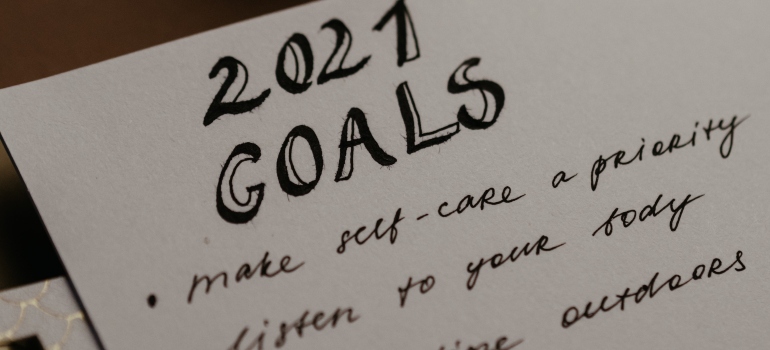
The very first thing you will want to do is decide what you want from your treatment. You see, each treatment facility has its own way of measuring success, meaning that they utilize different treatment strategies. That is why it is critical that you first decide on what your actual needs and goals are.
Once you figure out your needs and goals, you will want to match your needs and goals to a specific treatment center. To do so, you will need to get in touch with prospective centers. It is always best to talk to the representatives directly, but you can also utilize online information in your research. While talking to a representative, make sure to ask about everything you want to know, including their specialty, treatments, and therapies, and whether they offer MAT (Medication Assisted Treatment). Lastly, inquire about their location and amenities, as those can be some of the most influential factors. Of course, you will also want to inquire about the cost of the therapy and the applicable insurance coverage.
Understanding insurance coverage
Insurance coverage for treating PTSD and addiction in Pennsylvania can be extremely complicated. That is why you will want to talk to both your health insurance provider and your treatment center about the extent of your coverage. The best thing to do is connect the two of them and have them talk it out. That way, you can focus on your recovery and not on the insurance part of it.
Most health insurance plans will cover the cost of PTSD and addiction treatment, but there might be some gaps in coverage. Before you make any choice, make sure that you get as much information as possible. Furthermore, you may have special options available to you. The best way of figuring out these options is to go through an admissions process at a treatment center. By doing so, you will have access to professional information that can help you make the best choice.
The last piece of the “puzzle” is dealing with all the stigma surrounding PTSD and addiction.
Overcoming the stigma surrounding PTSD and addiction
Even though most people know that succumbing to mental illness or addiction is not a character flaw, there is still quite a bit of stigma surrounding both PTSD and addiction. Depending on where you live, this stigma may be one of the largest roadblocks on your road to recovery. Luckily, there are numerous ways to overcome the stigma surrounding PTSD and addiction. Here are some of the things you can do to make things better for everyone:
- Treat everyone with respect and dignity, regardless of their issues
- Choose how you speak, as words can have a profound effect
- Always be aware of your attitude and how you behave
- Try to always focus on the positive
- Learn more about mental illnesses and educate others
Keep in mind that it is practically impossible to fully eliminate the stigma around pretty much anything, in the short term. However, if we all do our part, the stigma will slowly dissipate and vanish altogether. After all, the stigma around treating PTSD and addiction in Pennsylvania was much worse a few decades back. As more and more people understand more about PTSD and addiction, this stigma slowly vanishes into the air.
Treating PTSD and addiction in Pennsylvania is all about fully understanding the causes, symptoms, and treatment options. If you are struggling with either PTSD, addiction, or both, your best course of action is always to get in touch with your local treatment center, where you can get even more information and proper treatment.